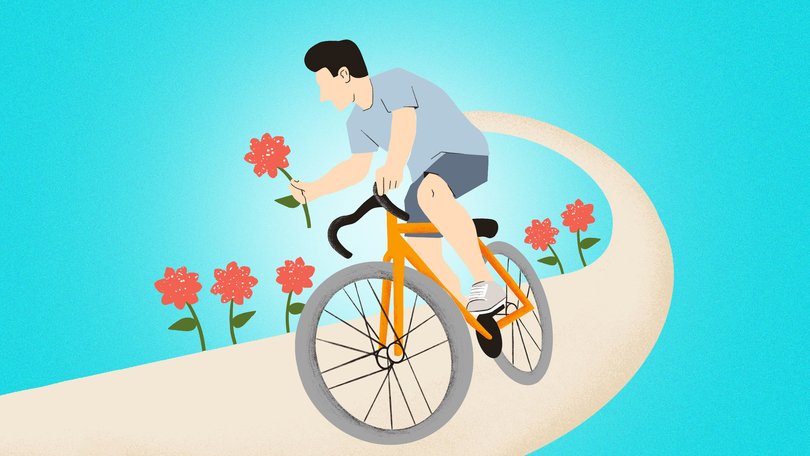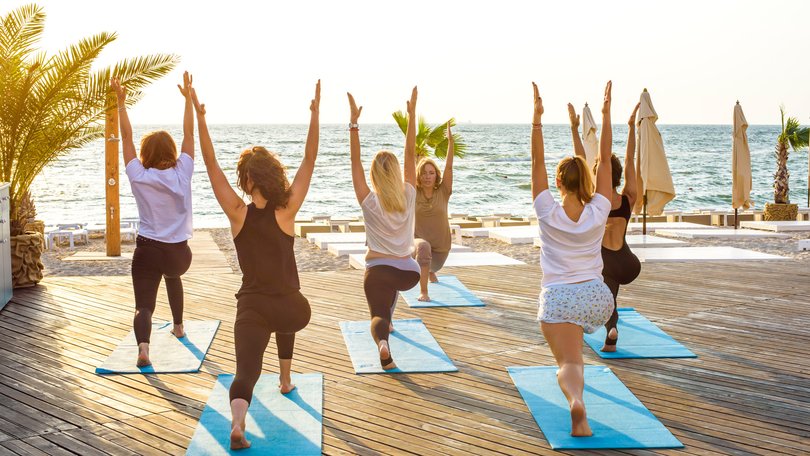THE WASHINGTON POST: Even small amounts of exercise can boost your mood and reduce your risk of depression

You may already know that moving your body is good for your mind. The good news is that you don’t necessarily need to sign up for a marathon or climb a mountain to reap the mental health benefits — the amount of exercise you do doesn’t matter as much as getting any at all.
When people think about physical activity, many picture intense, sweat-filled runs or gym workouts, “but really physical activity is simply an increased number of and amount of and volume of movement in the day,” said Eli Puterman, an associate professor in the School of Kinesiology at the University of British Columbia.
Research shows that even getting a little bit of movement improves our physical health and lengthens our lifespan, whether it is a walk in the park, doing daily chores or participating in a Turkey Trot this Thanksgiving.
Sign up to The Nightly's newsletters.
Get the first look at the digital newspaper, curated daily stories and breaking headlines delivered to your inbox.
By continuing you agree to our Terms and Privacy Policy.The same thing applies to mental health. Physical activity doesn’t have to be intense or lengthy to reap the mood-boosting benefits — including lowering the risk of depression.
“Even if you only have 30 seconds or even two minutes, you can do something and move around and still help with your mood,” said CJ Brush, an assistant professor of kinesiology at Auburn University.
The science behind mood and exercise
If you want a workout to ease your stress or anxiety, don’t expect the feel-good impact to be immediate. Many people don’t report feeling great during exercise, particularly if it’s intense.
Afterwards, however, people tend to feel good, especially with low- to moderate-intensity exercise, Mr Brush said. A 2020 meta-analysis of 157 studies reported that physical activity is associated with increased positive mood.
In particular, aerobic exercise can not only make people feel better but also give them a sense of control in their lives, according to a 2021 study Mr Puterman and his colleagues conducted.
It can also reduce negative mood and rumination, which are repetitive negative thoughts. (Most research studies examine aerobic exercise because those experiments are easier to conduct, Mr Brush said. Some studies have found similar positive mood effects from resistance training.)
Physical activity is also associated with a reduced risk of developing depression, according to a 2022 meta-analysis of 15 studies.

Adults who met physical activity recommendations — equivalent to 150 minutes of brisk walking a week — had a 25 per cent lower risk of depression compared to those who were sedentary.
But even getting half the recommended amount of exercise was associated with an 18 per cent reduction in risk.
If you’re not that physically active, more steps today is better than less steps, Mr Puterman said.
Exercise is also effective at treating existing depression and depressive symptoms, according to a 2024 meta-analysis of 41 randomised controlled trials. In fact, a 2022 study found that exercise may be as effective as prescription antidepressants when it comes to helping mild or moderate depression.
“We also know that aerobic exercise — running, biking, swimming, walking — also has profound effects on our mental health, specifically related to major depressive disorder, as well as other mood disorders,” including those associated with maternal health, says A’Naja Newsome, assistant professor at the College of Health Professions and Sciences at the University of Central Florida.
How exercise boosts mood
Why moving our bodies shifts our moods is complex and not entirely understood, and probably involves different biological pathways. But for the vaunted runner’s high, endorphins — which are painkilling opioids our bodies produce — probably receive too much credit.
While endorphins are a plausible mechanism for exercise’s effect on our mood, in humans, “we don’t really have convincing evidence,” Mr Brush said. Research suggests that endorphins produced in the body cannot cross the blood-brain barrier to reach the brain.
Instead, recent studies in humans and mice show that exercise activates the endocannabinoid system — our brain’s homegrown molecules that resemble those found in cannabis — which seems to be responsible for the post-run high.
Other research shows that exercise increases the release of other mood-related neurotransmitters, including dopamine and serotonin.
People who are depressed have lower levels of brain-derived neurotrophic factor (BDNF), which plays an important role in neuroplasticity and the growth of new neurons, Ms Newsome said.
“Acute exercise in the short term can help impact or increase that BDNF,” which may be a mechanism for reducing depressive symptoms, she said.
People with depression also tend to have a blunted or dysregulated response to stress and there is evidence that physical activity helps reset this stress response, allowing people to react and then recover, Mr Puterman said.
In studies measuring brain electrical activity, Mr Brush and his colleagues found that aerobic exercise increases brain responses to positive emotional stimuli.
Exercise can also reduce chronic inflammation, which is thought to play a role in a subset of depression cases. “Exercise leads to a calming down of our immune system,” Mr Puterman said.
How to get moving for your mood
- Do something you enjoy: Not everyone enjoys running, swimming or going to the gym. But there are many different ways to get your body moving, and you can find one that both suits your needs and your wants, whether it is yoga or gardening or just a walk around the park. “I tell people the best exercise program is the one that you’re actually going to do,” Ms Newsome said.
- Have a goal: Figure out what you want to achieve with your physical activity. “Set a goal that is realistic, challenging, but that you have the support to do,” Ms Newsome said. Having “something to work towards, to strive towards. And we know that that’s really important for behaviour change.”
- Try an exercise ‘snack’: Research shows that brief bursts of activity can help you reap the benefits of exercise, even if you don’t have time for a prolonged session. “It is an evidence-based approach to incorporating physical activity throughout your day to build up to that 150 minutes of moderate to vigorous physical activity,” Ms Newsome said.
- Track your exercise: Activity trackers can help you monitor your progress and this “knowledge is a critical component of increasing autonomy and self-efficacy for physical activity,” Ms Newsome said.
You can also record how you feel before and after you exercise, Mr Puterman said. Over time, you will see yourself feeling better and less stressed, with fewer fluctuations in mood, he said.
Maximise that feel-good feeling
After you exercise, savour “that feeling you feel at the end of it and remind yourself explicitly, ‘I feel good right now,’” Mr Puterman said.
You can also share how good your exercise made you feel with a family member or friend, he said.
When you share good news and successes with others, it can boost mood for both the sharer and the receiver of the news, a psychological phenomenon known as capitalisation.
These practices will help you feel even better post-exercise — and make it easier to start your next session.
The next time you can’t find the motivation to work out, you’ll remember how good it felt to share and decide “I’m going to do this for that experience,” Mr Puterman said.
Make it social
Research shows that doing almost anything is better with others than alone, and exercise is no exception. Having a workout buddy can increase your motivation and the likelihood you’ll continue the routine.
You can also look for a community online with social media in your local area. In each city, “they have lots of these groups for different populations, different demographics, different goals,” Ms Newsome said.
Be kind to yourself
Beware of negative self-talk or all-or-nothing thinking, experts said. If you don’t hit your exercise goal, don’t beat yourself up and take heart in knowing that even some physical activity is still doing you good.
“I really believe that one of the things that stops us the most in life and also in our health behaviour changes is, when we don’t succeed in the way that we had planned and thought that we could, how hard we are on ourselves,” Mr Puterman said.
“And if we can stop being so hard on ourselves, we might be able to make some different changes that are slower, but at least are more sustainable over time.”
© 2025, The Washington Post
Originally published as Here’s how much you need to exercise to feel a little bit better
